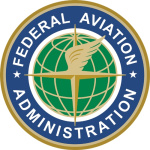- Industry: Government
- Number of terms: 35337
- Number of blossaries: 0
- Company Profile:
A small hole between a hydraulic brake master cylinder and the reservoir. When the brakes are released, this port is uncovered and the fluid in the master cylinder is vented to the reservoir. When the brake is applied, the master-cylinder piston covers the compensator port and allows pressure in the line to the brake to build up and apply the brakes. When the brake is released, the piston uncovers the compensator port. If any fluid has been lost from the brake, the reservoir will refill the master cylinder. A restricted compensator port will cause the brakes to drag or will cause them to be slow to release.
Industry:Aviation
An electrically driven centrifugal pump mounted in the bottom of the fuel tanks in large aircraft. Boost pumps provide a positive flow of fuel under pressure to the engine for starting and serve as an emergency backup in the event an engine-driven pump should fail. They are also used to transfer fuel from one tank to another and to pump fuel overboard when it is being dumped. Boost pumps prevent vapor locks by holding pressure on the fuel in the line to the engine-driven pump. Centrifugal boost pumps have a small agitator propeller on top of the impeller to force vapors from the fuel before it leaves the tank. G-6
Industry:Aviation
Colored marks on an instrument dial that identify certain ranges of operation as specified in the aircraft maintenance or flight manual and listed in the appropriate aircraft Type Certificate Data Sheets or Aircraft Specifications. Color coding directs attention to approaching operating difficulties. Airspeed indicators and most pressure and temperature indicators are marked to show the various ranges of operation. These ranges and colors are the most generally used: Red radial line, do not exceed. Green arc, normal operating range. Yellow arc, caution range. Blue radial line, used on airspeed indicators to show best singleengine rate of climb speed. White arc, used on airspeed indicators to show flap operating range.
Industry:Aviation
A type of selector valve that functions as an unloading valve as well as a selector valve. Open-center selector valves are installed in series, and when no unit is actuated, fluid from the pump flows through the centers of all the valves and returns to the reservoir. When a unit is selected for actuation, the center of the selector valve is shut off and the fluid from the pump goes through the selector valve into one side of the actuator. Fluid from the other side of the actuator returns to the valve and goes back to the reservoir through the other selector valves. When the actuation is completed, the selector valve is placed in its neutral position. Its center opens, and fluid from the pump flows straight through the valve.
Industry:Aviation
A type of hydraulic system-pressure control valve. When the system pressure is low, as it is when some unit is actuated, the output of the constant-delivery pump is directed into the system. When the actuation is completed and the pressure builds up to a specified kick-out pressure, the pressure regulator shifts. A check valve seals the system off and the pressure is maintained by the accumulator. The pump is unloaded and its output is directed back into the reservoir with very little opposition. The pump output pressure drops, but the volume of flow remains the same. When the system pressure drops to the specified kick-in pressure, the regulator again shifts and directs fluid into the system. Spool-type and balanced-pressure-type system pressure regulators are completely automatic in their operation and require no attention on the part of the flight crew.
Industry:Aviation
To pass fabric through a series of heated rollers to give it a smooth shiny surface.
Industry:Aviation
To lock the gimbals of a gyroscopic instrument so it will not be damaged by abrupt flight maneuvers or rough handling.
Industry:Aviation
